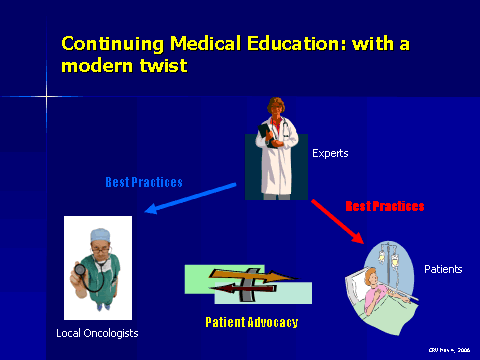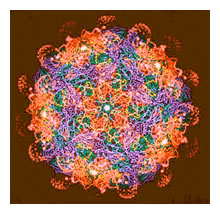 |
||||||||||
Date: June 10, 2026
by Chaya Venkat
Index Page for Articles on

Here is a sound bite that you can take to the bank: “About 80% of CLL patients will sustain infectious complications at some point during their disease course, and 50% to 60% of patients will die due to infection.” No, the majority of CLL patients do not die of old age, nor do they get hit by the proverbial bus coming down the turnpike. How many local oncologists are familiar with this scary sound bite, and use it to counsel their patients, as opposed to the “good cancer to have” baloney?
Here are some questions you should be asking. The answers may well make the difference between life and death — and they will certainly influence your quality of life.
 Funny you should ask. Yes, there are things we can do to protect ourselves. There is an absolutely hot-off-the presses review article that spells out “Best Practices” in our understanding of this important issue. The abstract of this important paper and our “cheat-sheet” summary of the highlights are given below for your reading pleasure. The link provided gives you access to the full-text article in PDF form. If the link does not work for you, please do write to us to help you locate the document.
Funny you should ask. Yes, there are things we can do to protect ourselves. There is an absolutely hot-off-the presses review article that spells out “Best Practices” in our understanding of this important issue. The abstract of this important paper and our “cheat-sheet” summary of the highlights are given below for your reading pleasure. The link provided gives you access to the full-text article in PDF form. If the link does not work for you, please do write to us to help you locate the document.
We hope lots of you print it out and take it with you to your next appointment with your local oncologist and make him a present of it. This is “Continuing Medical Education” with a modern twist appropriate for this internet era. Expert “Best Practices” that do not get sufficient publicity at the local healthcare level can be given a boost in visibility by patient advocacy and empowerment. We can take that extra step and help the process of knowledge trickle down - our very lives depend on it. Expert credibility and our grassroots reach is a match made in heaven.
Article from Seminars in Oncology (PDF)
Semin Oncol. 2026 Apr;33(2):240-9.
Infectious complications of chronic lymphocytic leukemia.
Wadhwa PD, Morrison VA.
Section of Hematology/Oncology, Veterans Affairs Medical Center, University of Minnesota, Minneapolis, MN 55417
Infectious complications continue to be one of the major causes of morbidity and mortality in patients with chronic lymphocytic leukemia (CLL). The pathogenesis of infections in these patients is multifactorial. Hypogammaglobulinemia is an important predisposing factor for infection in patients with early-stage disease and for those treated with conventional alkylating agents. However, the proportion of patients treated with purine analogs and monoclonal antibodies such as rituximab and alemtuzumab is increasing. As a result of this therapy, these patients often experience profound and sustained T-cell immunodeficiency. Consequently, the spectrum of organisms causing infections in these patients is changing from common bacterial organisms to less common opportunistic pathogens such as Pneumocystis, Listeria, mycobacteria, herpesviruses, and Candida. This review focuses on the pathogenesis and risk factors for infections in patients with CLL, the spectrum of infectious organisms associated with the newer agents, and the management of these infections with an emphasis on prophylaxis and vaccination strategies.
PMID: 16616071
____________
I had trouble picking out the highlights of this article, since the whole review is one giant highlight! There is a treasure trove of information in this review. The only way you are going to get the full benefit of this excellent overview is to get out your highlighter, sit down with a full text hard copy of the article and mark it up to suit your personal situation. I strongly urge you to do it — someday, your life may depend on your familiarity with this subject.
What makes CLL patients so prone to infections?
Do the drugs used to treat CLL make us more prone to infections? What are some of the major infections?
Strategies for Prevention of Infection
Continuing Medical Education (CME) is supposed to be the mechanism for bringing local physicians up to speed and keep them informed about new research findings. One can see thousands of oncologists and hematologists wandering around like lost souls at the annual ASCO (American Society of Clinical Oncology) and ASH (American Society of Hematology) convention centers. They are exposed to literally hundreds of presentations, many times more poster presentations, all of them thick and heavy with jargon. You can hardly blame our poor, over-worked and out-of-date oncologist for feeling intimidated and overwhelmed. The bars and restaurants around the convention centers are jammed each evening with doctors – lost souls trying to get rid of the migraine resulting from a full day of information overload.
Let us take a typical case, an oncologist in a small town or rural area, someone who went to medical school about 20 years ago, long before the era of molecular understanding of what makes CLL tick. We will assume this individual is a hard-working, well-intentioned practitioner who is trying to cope with ever increasing work load and complexity. Perhaps this physician belongs to an HMO and must satisfy the requirements of that organization in terms of costs and efficiency. He takes care of dozens of different types of cancer. The majority of his patients have the “big” cancers, such as breast cancer, prostate cancer, lung cancer and colorectal cancer. He may even have a smattering of patients with blood cancers, such as the acute leukemias and lymphomas. Each and every one of these cancers is a different beast, with its own explosion of new research findings. How many CLL cases is our hypothetical oncologist likely to see in a year? I doubt most local guys see more than one or two a year. Even hematologists who specialize in blood cancers may see no more than a handful of CLL cases in as many years.
Our typical physician faces constraints at every turn. He lives in an era of information overload. There are not enough hours in the day for him to bone up on all the stuff he needs to know. He must be efficient in his time management: he cannot spare more than the mandated 15 minutes for each patient. He must be cost conscious — the HMO is not going to react kindly to expensive diagnostic testing, not unless it has the backing of experts as necessary part of cutting edge prognostics. His medical malpractice insurance is going through the roof and he might feel the only way to protect himself is to do the slam dunk “gold standard” conventional therapies. No one gets sued for being boring, unimaginative or conventional; blazing a new path can be dangerous, it may hurt. If he spends any time worrying about his patients over and beyond the required 15-minute consultation, chances are he will spend it worrying about his “really sick” cases, not about his rare CLL patient. After all, CLL patients hang around for a long time and it is the "good" cancer to have, right? CLL patients do not die of CLL, they are more likely to get run over by a truck, right? How many of us have heard these ghastly conventional half-truths?
In the absence of rigorous truth, sound bites rule. There is no doubt in my mind that the slow trickle down of “Best Practices” is standing in the way of prompt and effective treatment of our patients. The theme of my recent talk at the UK CLL Forum (click here for a pdf version of Chaya's presentation) was that while researchers and experts are learning a great deal about CLL — what makes it tick at the molecular level, how best to treat it, what prognostics to use to make therapy decisions, what are the risk factors, etc. — this precious, life saving information is not trickling down fast enough to the local level. A small subset of our patient community gets the benefit of the hard won wisdom from cutting edge research — patients who are fortunate and able to go to experts at world class cancer centers, or patients who are just plain lucky and find a doctor that bothers to keep up with the latest information. For the rest of us the story is a whole lot bleaker. We are getting short-changed on all fronts. Having access to a knowledgeable and up-to-date physician is one of the most important prognostic indicators for managing your CLL over the long haul.
Most CLL patients in the United States are diagnosed and treated by local oncologists. Even though most insurance companies cover the cost of a second or even a third opinion, the majority of patients do not use this available resource. Why is that? Perhaps the patient has unbounded faith in his or her particular doctor or perhaps he or she is afraid of offending the local guy by asking to get a second opinion. Many patients feel intimidated in the doctor-patient relationship and the mere mention of a cancer diagnosis knocks the stuffing out of even the most intrepid. Bravado is checked in at the door and we meekly submit without any effort at taking charge. Sometimes trivial details show up as road-blocks. One patient who received less than optimal therapy from her local guy, and who happened to live within a hundred miles of the world-class CLL group under Dr. John Byrd at Ohio State University, told me that she did not want to spring for the cost of gasoline for the 100-mile drive each way. At the risk of sounding unsympathetic, I will ask how much does she spend each month on going out to eat or splurging on lattes at the local Starbucks or getting her hair and nails done at the beauty parlor? People, get your priorities right! If you cannot be bothered to take care of your health, how can you expect anyone else to do so?
 Enter Keywords: |
———
Disclaimer: The content of this website is intended for information only and is NOT meant to be medical advice. Please be sure to consult and follow the advice of your doctors on all medical matters.
Copyright Notice:
Copyright © 2026-2007 CLL Topics, Inc. All Rights Reserved.
All materials contained on this site are protected by United States copyright law and may not be reproduced, distributed, transmitted, displayed, published or broadcast without the prior written permission of CLL Topics, Inc. You may not alter or remove any trademark, copyright or other notice from copies of the content.
However, you may download and print material from CLLTopics.org exclusively for your personal, noncommercial use.
———
